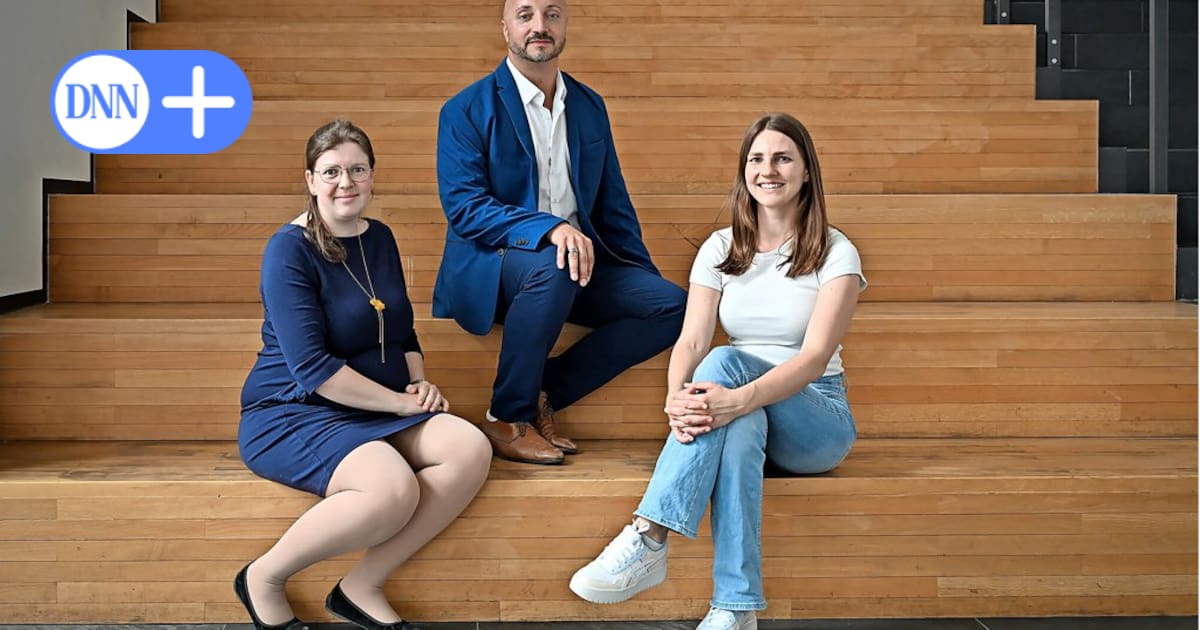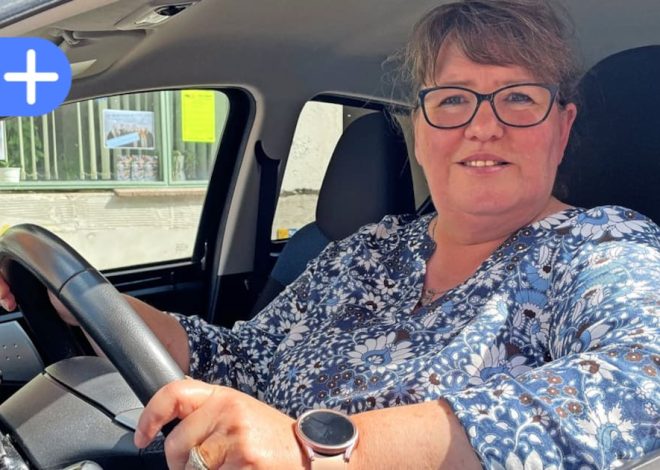
What the EHS Dresden has to do with community nurse Agnes
Dresden. The older generation will probably still know her: Sister Agnes. In the film of the same name produced by DEFA, the woman in her mid-fifties drives her white Schwalbe through the fictional town of Krummbach in Upper Lusatia to look after her patients as a community nurse. The film from 1975 still gets good ratings today.
Read more after the Advertisement
Read more after the Advertisement
The work of the community sisters in the GDR
While Agnes is only fiction, there were actually community nurses in the GDR. Especially in rural areas, they acted as a link between patients and the few family doctors that were there at times. Through their home visits, the community nurses were able to relieve the burden on doctors and save patients long trips to the doctor’s office. They were not only available for medical questions, but also for everyday worries.
Although the film Sister Agnes was made well before its time, Robert Bitterlich is familiar with her. Almost every time he has to explain to someone what he learned in his part-time master’s degree in Community Health Nursing (CHN) at the Evangelical University of Dresden (EHS), the conversation eventually turns to the community chestnut with the white hood and white swallow.
Read more after the Advertisement
Read more after the Advertisement
also read
Better connected and equipped than Sister Agnes
“We resisted this comparison for a long time,” says Thomas Fischer, Professor of Nursing Science at the EHS, laughing. “But now we’ve accepted it a little.” After all, people can imagine what the term Sister Agnes means. Although Fischer emphasizes: “What we’re training is more of an Agnes 3.0, who works with modern technical aids, is networked and has significantly more skills than the community nurses of the GDR era.”
On its website, the EHS translates the cumbersome English term Community Health Nursing as community health care or district health care. This is because, in addition to deepening nursing practice in the home or outpatient setting, the course also involves understanding and designing health care structures in rural communities or in districts of larger cities.
Read more after the Advertisement
Read more after the Advertisement
“Recognize health risks before they become acute”
It’s not just about seeing the patient as part of a community or neighborhood. It’s also about involving their personal environment, family and friends, and motivating the patient to actively participate in their health. “We don’t want to start with the sick person, but rather look beforehand at how the people in the community are doing, identify health risks and resolve them before they become acute,” explains Robert Bitterlich, who graduated from EHS in 2023.
DAK praises study program in Dresden as a positive example
According to Thomas Fischer, the university was the first in Germany to include CHN in its range of courses in 2020. For this, it was praised by the DAK health insurance company in its 2024 nursing report. The course enables nursing staff to expand their skills, gain academic training and open up new professional fields, which, the DAK hopes, could make the nursing profession more attractive in times of a nursing shortage.
The new job description of the CHN is even included in the federal government’s coalition agreement. By further developing the nursing profession, politicians hope to be able to counteract demographic change and the migration of family doctors to rural areas.
“Outpatient care has a lot of potential that is not being used”
“Outpatient care has a lot of potential that is not being used,” complains Rebekka Kauthe, who is still at the beginning of her CHN studies in Dresden. As an example, she cites the morning and evening washing of her outpatients, for which she has a certain number of minutes available and is reimbursed with a certain amount. “In this system, I have no chance to take individual approaches, to see how the person is otherwise doing, for example whether they have problems walking and whether they can still manage on their own.” If she had more room to maneuver, Kauthe is sure, she could significantly improve the situation of her patients – precisely because, unlike the family doctor, she is so close to them.
Read more after the Advertisement
Read more after the Advertisement
A potential that Thomas Fischer also sees as being untapped. “Some things can be seen in the GP’s office and some only when you are at the person’s home,” says the professor of nursing science. This gap needs to be closed, especially in Saxony, where demographic change is already leading to problems with care in rural areas.
Preventive home visits for everyone over 65?
But even large cities like Dresden could benefit from a new version of the community nurses, according to Fischer. The professor is thinking of senior citizens who live alone at home. Through targeted prevention, such as regular home visits for everyone over 65, it would be possible to ensure that people can cope on their own for longer. “Because when someone has fallen,” says Fischer, “it is often already too late.” Then it is not uncommon for them to move to a nursing home.
Lack of employment opportunities for master’s graduates
As much as community-oriented care has potential, it has so far been implemented very little. There are a few pilot projects in Germany in which community nurses 3.0, as Thomas Fischer calls them, are being deployed. However, the German health system lacks the structures across the board. Countries such as Finland and Canada are already further ahead in this regard. There, appropriately trained nursing professionals can already work in the way that the EHS envisions with its master’s degree program.
Read more after the Advertisement
Read more after the Advertisement
Melina Hendlmeier has experienced how much fun this can be. During her CHN studies, the 27-year-old did an internship in a so-called Nurse Practitioner-Led Clinic in Canada, a health center run by nursing professionals with master’s degrees – without a doctor. “There, not only the patient’s symptoms were taken into account, but also their living conditions,” she says. For example, the nursing staff would check each visitor’s smoking status and discuss options for quitting smoking with them.
Nursing association sees legislators as responsible
The German Professional Association for Nursing Professions has also criticised the fact that the structures for this type of care are currently lacking in Germany. “There is still a long way to go to achieving comprehensive provision of community health nurses,” it writes on its website. The association sees one reason for this in a “rigid distribution of tasks between the health professions”, i.e. between nurses and family doctors. In order to change this, it is necessary to transfer medical tasks to the nursing profession and to expand its area of competence. The legislature is called upon to make new regulations here.
“We are ready when politics is ready”
Rebekka Kauthe is also waiting for this. In two years she will probably have her degree in CHN in her pocket. Then, she says, she will see what is possible for her as a nurse. Why did she choose the master’s course, even though there are still no opportunities for the modern version of Sister Agnes? “Because I would like to stay in my job,” says the 27-year-old. “And instead of moaning about everything that is stupid in nursing, I prefer to try it. Or I try to change something and help shape new care concepts.” Robert Bitterlich, who graduated from the EHS a year ago, puts it this way: “We are ready when politicians are ready.”
DNN

Ethel Purdy – Medical Blogger & Pharmacist
Bridging the world of wellness and science, Ethel Purdy is a professional voice in healthcare with a passion for sharing knowledge. At 36, she stands at the confluence of medical expertise and the written word, holding a pharmacy degree acquired under the rigorous education systems of Germany and Estonia.
Her pursuit of medicine was fueled by a desire to understand the intricacies of human health and to contribute to the community’s understanding of it. Transitioning seamlessly into the realm of blogging, Ethel has found a platform to demystify complex medical concepts for the everyday reader.
Ethel’s commitment to the world of medicine extends beyond her professional life into a personal commitment to health and wellness. Her hobbies reflect this dedication, often involving research on the latest medical advances, participating in wellness communities, and exploring the vast and varied dimensions of health.
Join Ethel as she distills her pharmaceutical knowledge into accessible wisdom, fostering an environment where science meets lifestyle and everyone is invited to learn. Whether you’re looking for insights into the latest health trends or trustworthy medical advice, Ethel’s blog is your gateway to the nexus of healthcare and daily living.



